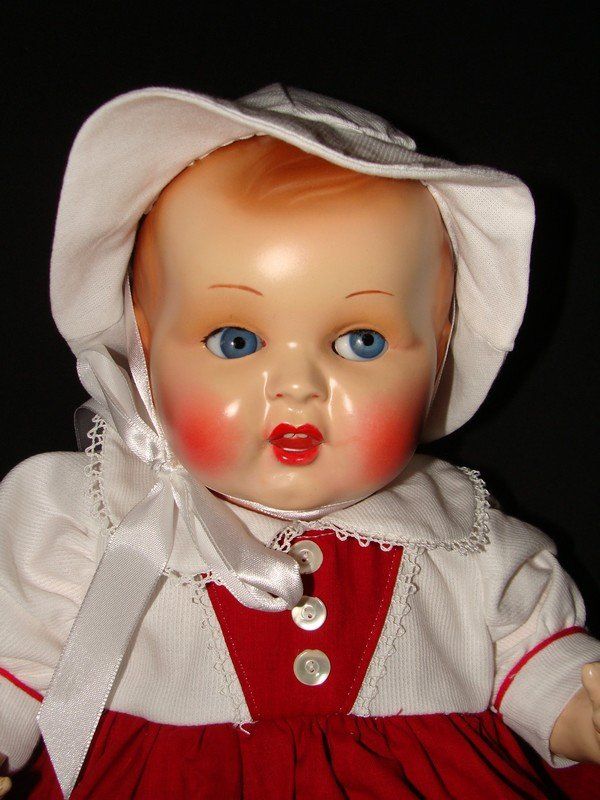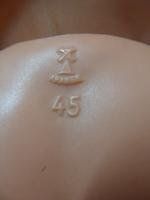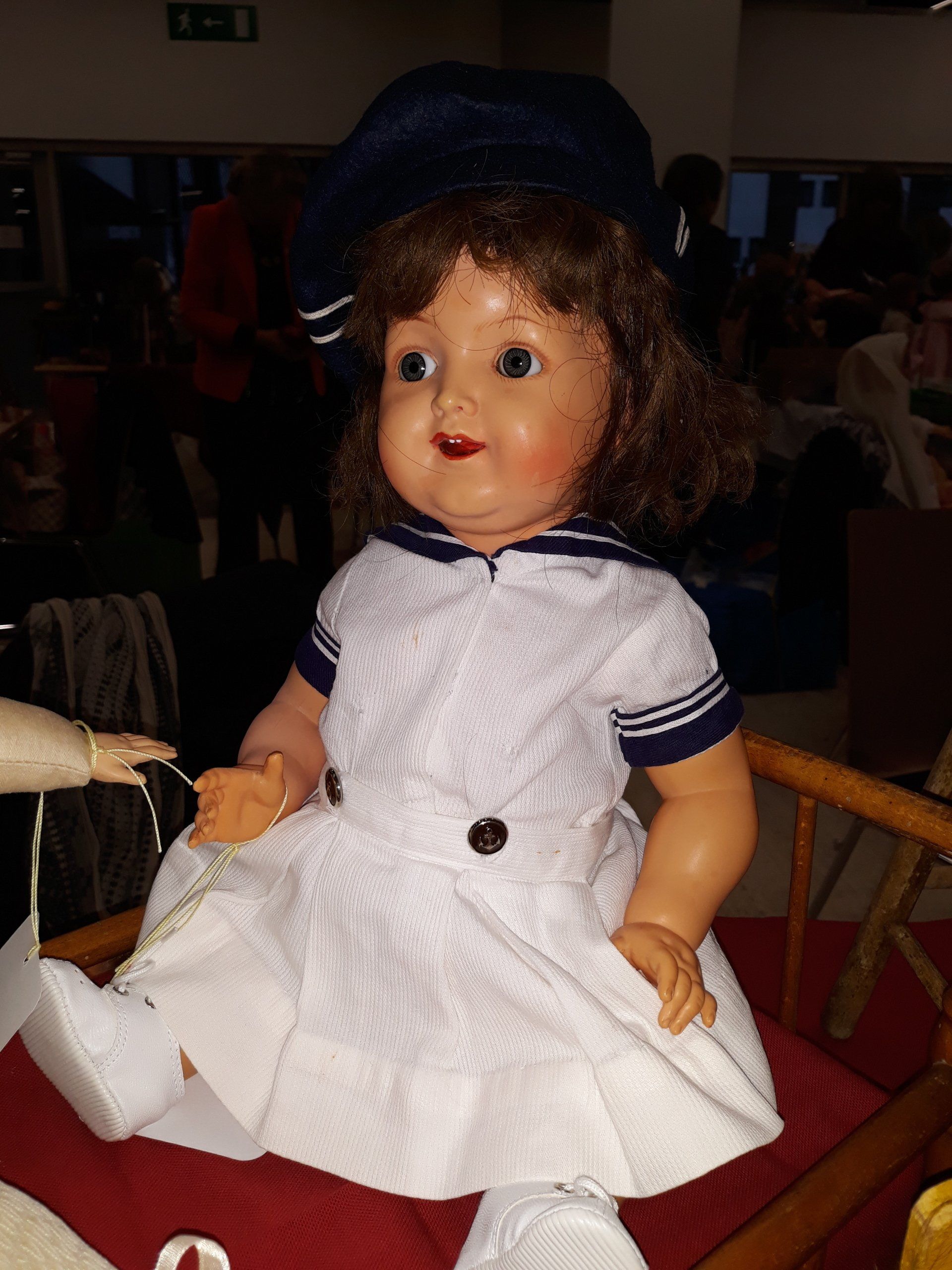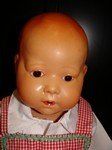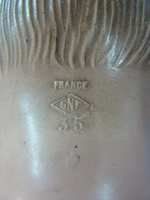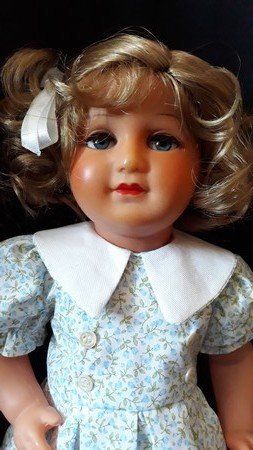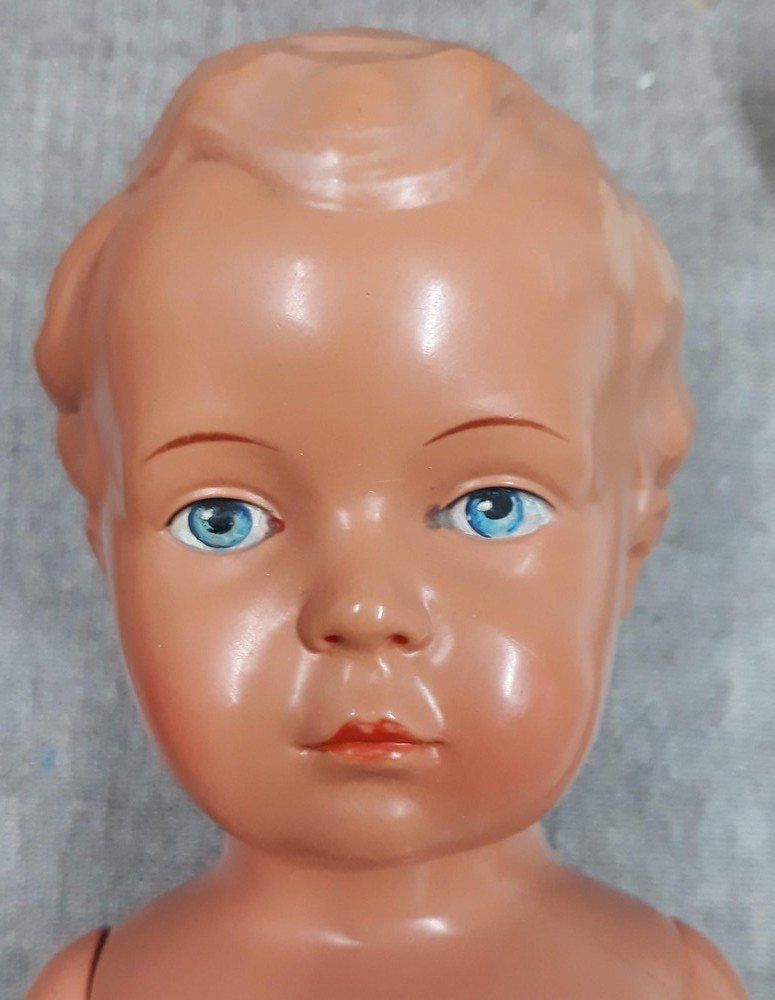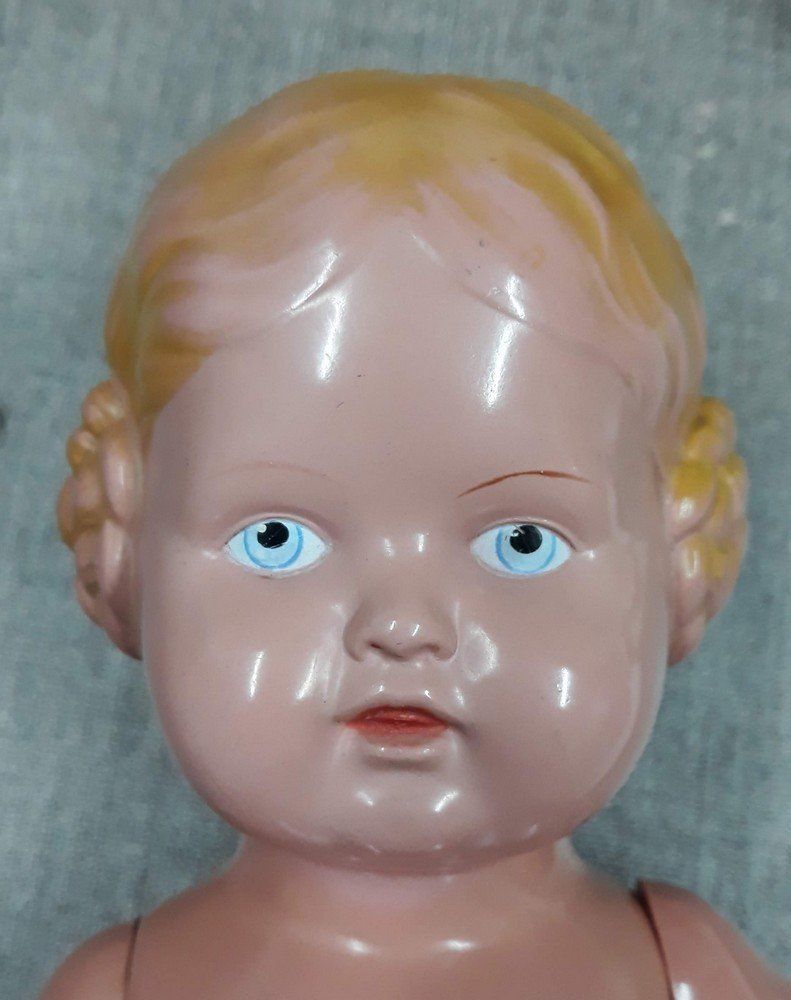Recognize celluloid baby dolls
Celluloid or more precisely cellulose nitrate camphor or cellulose acetate was born in 1877 in the United States implemented by the Hyatt brothers. It is considered the first plastic. At the beginning of the 20th century, he largest French celluloid production center was located in Oyonnax but the use of this material developed mainly in the 30s until 1955. It was banned in the 60s because of its flammable properties .
Anel and Convert baby dolls
Anel and son dolls produced swimmers from 1904 to 1930 with SIC, they were precursors in the field of doll making. The majority of Anel's production does not carry a mark until 1928 only the word "filed" overhanging the number of the waist at the top of the body. There are rare models with the AF brand before the acquisition of the company by the Convert establishments in 1930.
The Convert plant was created in 1833, but the first known babies were produced in 1911 at the Grand Moulin factory in Oyonnax, but it was especially in the 1930s that the production of bathers gained momentum through the creation of a doll of 35cms to 10 francs. After buying the Anel house in 1935, they bought the molds from the Desrues factory in 1949. Convert was one of the first to manufacture polyethylene models in 1954. For a long time, they made the celluloid and plastic models together. the total stopping of celluloid in the 60s. Convert companies stopped producing in 1983. The iconic model of the brand: the Nano was manufactured in all materials.
The Convert plant was created in 1833, but the first known babies were produced in 1911 at the Grand Moulin factory in Oyonnax, but it was especially in the 1930s that the production of bathers gained momentum through the creation of a doll of 35cms to 10 francs. After buying the Anel house in 1935, they bought the molds from the Desrues factory in 1949. Convert was one of the first to manufacture polyethylene models in 1954. For a long time, they made the celluloid and plastic models together. the total stopping of celluloid in the 60s. Convert companies stopped producing in 1983. The iconic model of the brand: the Nano was manufactured in all materials.
The company Petitcollin
Although the Petitcollin Society was born in 1860 in the Somme, the first baby doll did not appear until 1912. The factory was destroyed during the first world war and was only reopened in 1924 until its peak in the 30s. Petitcollin is certainly the most famous brand in France and abroad. It produced celluloid until the 50's and then goes on to polyetilene. The production continues today which makes Petitcollin one of the oldest brand of French toys. We currently find at home plastic dolls, reissues of antique dolls whose famous like the Françoise de Modes and Travaux which they bought the molds to the company SNF in the 50s. Their current collection also includes very pretty vinyls dolls.
SIC and SNF brands
The Industrial Company of Celluloid was founded in 1887 and was probably one of the first factories to produce dolls from 1903, it will join SNF (Nobel company of France) in 1927. In spite of the fusion, the two companies kept their respective mark during some time apparently until 1934/35. The SNF used polyethylene from 1958 and has not manufactured dolls voluntarily since 1963. The best-known models were the François which successively bears the mark SIC and SNF and was also produced in polyethylene and Jacky.
The Raynal brand
The company Raynal appears in the Paris region in the 20s. Initially, it manufactures felt dolls inspired by the manufacture Lenci in Italy. From 1934, celluloid and plastic compositions appeared in the 35s. The first celluloid baby appeared in 1936, but the company mainly used rhodoïd with a cloth body. This material was replaced in 1963 by vinyl. One of the last models to bear the name of Raynal was the Tinnie doll in 1976. This company stopped producing in 1980.
.
.
The Schildkröt brand
German brand of Celluloid "tortue" or in French company Rheinnane of Celluloid located in Mannheim-Neckarau until 1993 whose production extends from 1896 to the present day. The latest models are made of plastic and bear the mark "Tortulon". Mold manufacturers sometimes being independent of doll producers can be found identical copies from different manufacturers is the case of Baby produced by the company SIC and brand schildkröt. The production of this company is impressive variety passing through the classic baby doll, the doll, but also many baby doll heads or dolls for other manufacturers including Kammer and Rheinhardt, Koenig Wernicke or Margaret Steiff.


